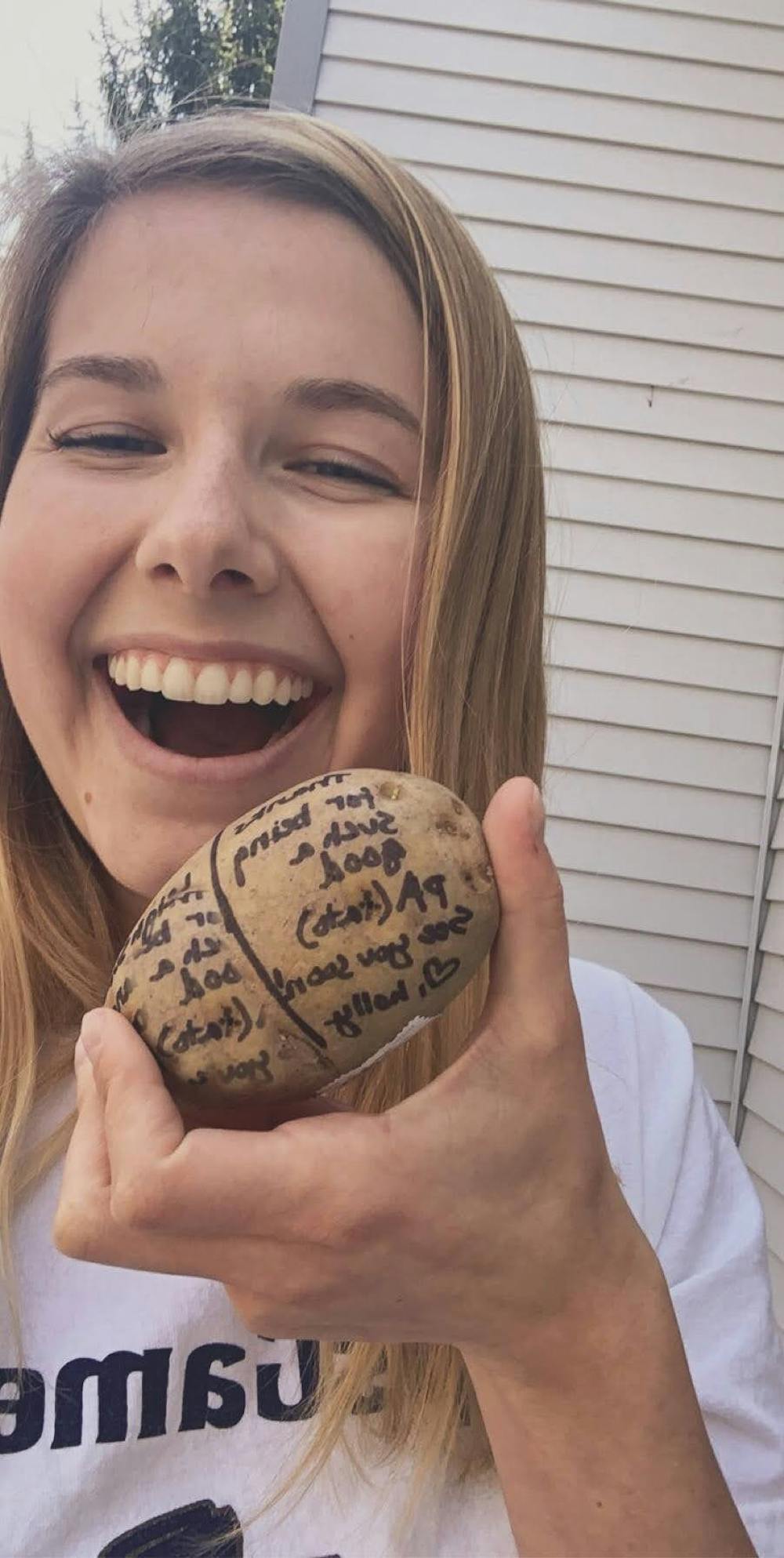I mailed my first plain potato in the summer of 2017.
Since then, for better or worse, mailing weird things has become a hobby of mine. I have mailed unpackaged flip flops, frisbees and more.
At the end of the day, I just love snail mail. I think there is something so sweet about taking the time to sit down and write a letter or put together a package. It hits all of the love languages — someone took their time to send a physical representation and expression of their love for you as a gift. There is something so charming about it.
I say this not to romanticize potatoes — that comes more from my perpetual pursuit of whimsy.
However, with social distancing and the coronavirus pandemic, I think we need love and whimsy now more than ever. We need potato mail.
For my friends, potato mail has been a lovely way to brighten each other’s days. Thus far, I have mailed 11 potatoes and numerous cards.
However, if the last three years have taught me anything, it is that fun mail doesn’t stop with potatoes. Here are three ways to spice up your USPS:
1. Potatoes and other unwrapped mail
Believe it or not, the rules about what you can mail are pretty ambiguous – anything safe and nonperishable under 13 ounces and 12 inches can be sent with regular stamps attached.
To prepare an item for mailing, simply dictate one side write on and the opposite to put stamps on.
For the written side, divide the space in half by drawing a line. Write the message on the left half and the receiver’s address on the right half. Use a permanent marker that won’t smudge or bleed or, if the item has a slick surface, write on a piece of paper and tape the paper onto the item.
A general guideline for postage is to put one more stamp than the weight of the item in ounces. However, some items, like frisbees, may be much larger than they weigh. In this case, you can refer to the USPS’s postage price calculator (or use a generous amount and hope for the best.)
From there, just place the item in your mailbox or a USPS collection box. There should be a collection box with an opening for larger items at your local post office.
Because unwrapped mail is not as easily sorted, delivery time varies. Some things may deliver just as normal, where other things may take weeks. However, patience is a virtue.
**If you want to send something larger unwrapped, you can always take it into the post office to buy special postage. I admire your confidence and you can do all things through Christ who gives you strength (Philippians 4:13).
2. DIY postcards
Just like USPS rules for unwrapped mail, the rules for postcards are pretty open-ended. Postcards should fall in the size range from 5 by 3.5 inches and 6 by 4.5 inches. They should also be a heavier weight than regular printer paper, as to not get caught in processing machines.
Other than that, you’re golden to do what you want! Cut up cereal boxes, print photos or decorate cardstock paper and make it your own fun postcard. Personally, I have enjoyed trying my hand at simple watercolor postcards.
From there, treat it like any other postcard — a line down the middle, message on the left, address on the right and stamp in the upper-righthand corner.

3. Funky stationery
My favorite cards are found at thrift stores. Over the years, I’ve found themes about anything and everything, including vintage flowers, random flags and Uno Attack. Sending a sweet letter on a random card always adds a little bit of fun.
While thrift stores are not open, that doesn’t mean you can’t still use unique stationary or cards. Free stationery templates are available online, while Redbubble and Etsy have cards you can order or download.
If you’re feeling creative, canva.com comes with free templates and design tools to make cards. From there, you can download your design and print off your own card.
I hope these ideas come as an inspiration for creativity and encouragement! We are limited in the ways we can interact with each other, but not completely stifled. Sending snail mail is just one way we can keep intentional community.
**According to The Associated Press, there is no evidence of transmission of COVID-19 through the mail — the best way to limit transmission is to limit interaction at the post office or with your mail carrier. However, exercise caution however works best for you and your household.





